Shimano GRX 800 Components: Getting Rolling – by MG
In May, Shimano caused quite a stir when it announced GRX, the world’s first dedicated gravel road components. It’s a bold move from the Japanese component giant, and it’s a sign of the direction they see cycling moving in the future. We recently got an exclusive first ride on Shimano’s GRX mechanical group and will give our initial impressions here.
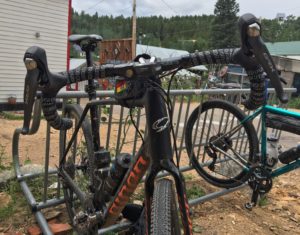
Guitar Ted covered the technical details of GRX, including available parts, trim levels, weights and prices, in an earlier post, so be sure to check that out to get the full scoop.
To quickly recap however, GRX is available in three trim levels, and both 1x and 2x configurations, so GRX isn’t a ‘one size fits all’ solution. Rather, it offers options to optimize drivetrain type to meet specific needs, while still using components designed to work together, with a consistent look and feel. In many respects, GRX combines many of Shimano’s best road and mountain drivetrain technologies for the benefit of drop bar loving gravel and adventure cyclists.
First Ride On GRX
I traveled to the Colorado front range for my introduction to the GRX mechanical group. There, I met up with the multi-talented gravel legend, Nick Legan. Not only is Nick a product manager at Shimano, he’s a noted author and cyclist, and has completed legendary rides including the Tour Divide and Dirty Kanza XL, among others.
After taking a few minutes to dial in the fit on my GRX-equipped Niner RLT9 RDO gravel bike, we set off climbing into the foothills to the north and west of Boulder. Despite the different feel of the textured brake hoods and reprofiled brake levers, it was easy to tell I was on a Shimano-equipped bike. Rear shifting was swift, silent and solid, and the brakes powerful and consistent.
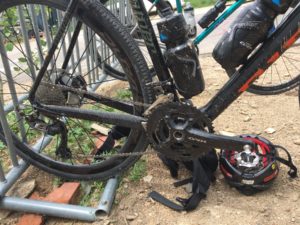
As we climbed, I quickly came to appreciate the 31x34t low, which is lower than the 1:1 (34x34t) gear I typically run on my own gravel bikes. Even though we were riding at a higher elevation than I was used to, I was able to spin with relative comfort up the steepest climbs we encountered.
One question I had coming into the ride was how the front derailleur would cope with the large 17 tooth jump between the chainrings (traditional road derailleurs max out at a 16t jump). I found the answer to my question as the climbing gave way to more rolling terrain. Front shifting is exactly as I’ve come to expect from Shimano, which is to say, it’s solid. Shifts in both directions are quick, precise and worry-free.
After a quick stop to refuel in Jamestown, we hit a fast road descent where we clocked speeds of nearly 50 mph. It was here that I appreciated the wide range GRX gearing, as I was able to pedal at more than 40 mph in the top gear. When I can comfortably pedal at both 4 mph and 40+ mph on the same drivetrain, that’s pretty sweet.
Recent rains in the area made for sloppy conditions, particularly early in the ride. Despite the layer of gritty crud, the GRX drivetrain performed without complaint.
The Importance of Ice Tech
The GRX hydraulic disc brakes are impressive as well. This was my first experience with Shimano’s finned, multi-layer alloy and steel Ice Tech rotors. In short, they work. Power is very strong, especially for 160mm rotors, and modulation is very easy to control. Fade was completely a non-issue.
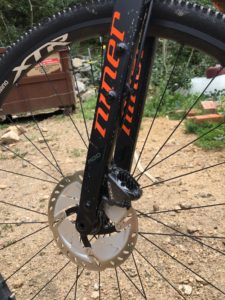
I’ve been riding other bikes equipped with both Ultegra and 105 hydraulic brakes recently, but without the Ice Tech rotors. Simply stated, the Ice Tech-equipped GRX brakes just feel better. Power is noticeably stronger, which I did need to get used to, but once adapted, modulation is at least as good as Shimano’s other high-end brakes.
When I mentioned this to Nick, he said the difference is largely due to the rotors, as the brake calipers are similar. He said the rotors work to dissipate heat from braking quicker, so they don’t start to fade or change bite point in the middle of a long descent.
I suspect the shape of the brake lever could be playing into things a bit as well, but that’s just conjecture.
Love Handles
While we’re on the topic of levers, I’ll just say I’m a big fan of the more angular, edgier shape of the GRX brake/shift levers. They feel great whether braking in the hoods or drops. The shift buttons (behind the levers) are easy to reach and operate, and shift action is light and precise.
Lever reach is easy to adjust as well. Even though I have big hands, I prefer to run my levers close to the bar, and the GRX levers accommodate my setup easily.
I forgot to pack gloves on my ride with Nick, so I did the entire 50 miles glove-free. Despite the often rough conditions, I didn’t struggle with grip, or find myself slipping off the hoods, at any point in the ride. That’s impressive.
Successive rides have proven the new hoods to work equally well with gloved hands.
GRX First Impression
As Nick and I rolled back into Boulder on an easy singletrack trail, I was struck by how good we have it as gravel cyclists today. We have bikes that can take us seamlessly from pavement, to dirt road, to singletrack trail, with equal aplomb. Now, with the introduction of Shimano GRX, we have a drivetrain that’s designed to do the same thing.
My initial take on GRX is very positive, as you may have surmised. It’s pretty much right in line with what I hoped Shimano would introduce and it gives bike manufacturers some exciting new options that will result in even better, more versatile gravel bikes in the future.
Finally, I really like that Shimano made GRX components 11-speed, because it’s consistent with Shimano’s other drop bar groups. This opens up the option of picking and choosing your favorite GRX components, or mixing and matching parts from multiple groups to achieve your specific cost, weight and performance goals.
Shimano left the GRX-equipped RLT9 RDO with me for long-term testing, so I’ll be riding it and posting updates in the weeks to come. Be sure to check back often for those.
In the meantime, learn more about the GRX components on the Shimano website. Head over to the Ninerbikes.com to learn more about the RLT9 RDO.
Special thanks to Nick and Kristen Legan. Shimano provided lodging and the GRX-equipped Niner RLT 9 RDO at no charge to Riding Gravel for test and review. We are not being bribed or paid for this review and will give our honest opinions and perspectives throughout.


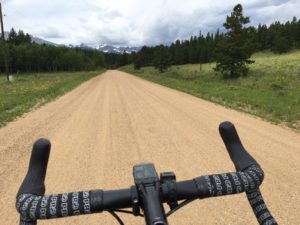

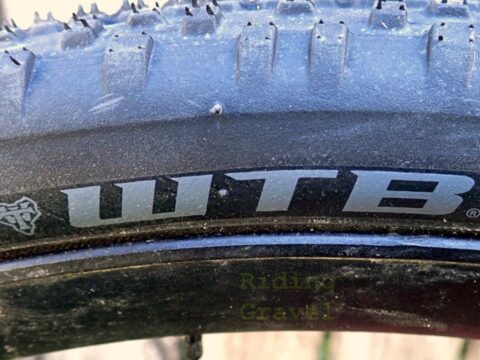
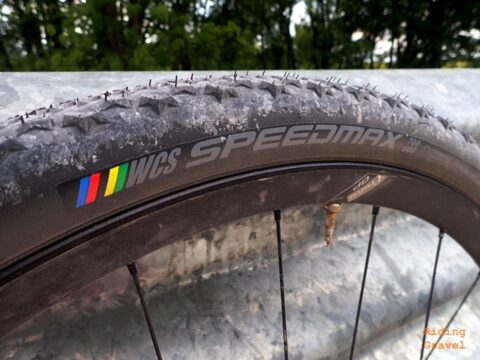
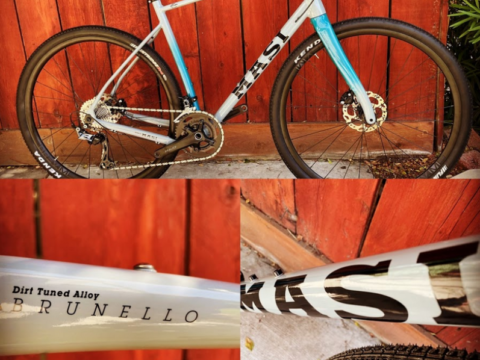

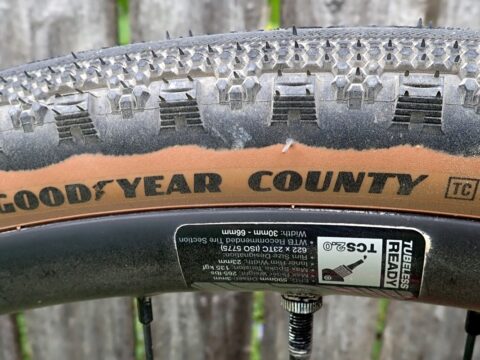

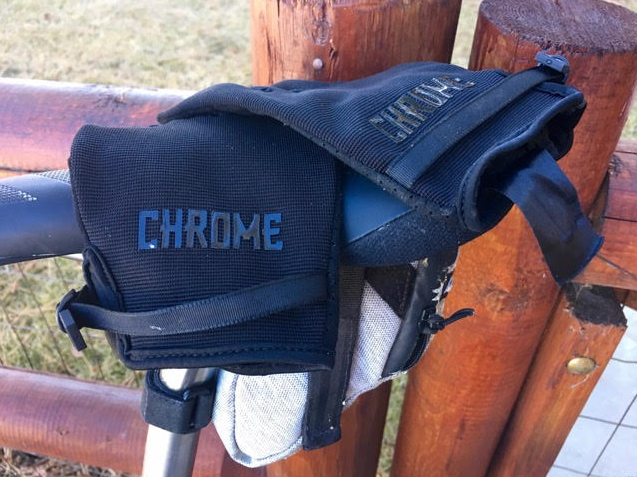
31t in combo with 34t – ::drool::
What version do you have? ‘Shift buttons’ sounds like Di2.
I’m currently testing the mechanical group, but will have a Di2-equipped bike to test in late August. Sorry for my confusing terminology.
Thinking to swap my current Ultegra mech to GRX long cage. The idea is to ride 11-42 cassette with 2x 46/34 for tough off road terrain. On the other hand I’d like to keep 11-32 in my road wheels set. Do you see that doable? I’m looking for total versatility just swapping wheels
Technically perhaps impossible, as what you propose, there is a 12+31=43 capacity necessary, and the derailleur has a 40t capacity. However, it could still work. If you already have the 11-42 cassette I imagine you want to try. More challenging than the rear derailleur capacity will however be the B-screw. If the cage is designed for 34t max, then it’s quite a stretcht to go to 42t. However, in case you did not yet purchase a 11-42 cassette, and want to try this. I would certainly try it with the 11-40t. This is probably not a challenge as much for the deraiileur capacity, as its just asking for 41t with a 40t capacity, its just 1t, and just avoid the 34/11 gear (which you won’t go anyway). More challenging will be still two things here, chain length, likely you need 114-120 chain links depending on chain stay lenght, and B-screw/cage adjustment. Actually I think 11-42 will never work due to chain length issues, and you really need to be able to shift big/big contrary to small/small, as you can easily end up there. I think chances 11-42 works fine are very small, because 1.) chain length won’t work, B-screw adjustment won’t suffice and derailleur capacity demand (+3) is a stretch. On the contrary I think the chance you can make 11-40 work with 46/34 is very high, because 90% chance you can make chain length work, 2.) only 1t over derailleur capacity, and Shimano is quite generous here normally, likely B-screw can accomodate the 40t cog, although that’s the hardest thing yet. Alltogether I give this combo 70% chance of working.
Hey Jorge – Technically, based on Shimano’s published data, the 11-42 with a 46/34 would fall outside the capacity of the rear derailleur. You may be able to find an aftermarket B link from someone like Wolf Tooth that could increase the capacity to work, or you may be able to simply do it with the B tension screw. Either way, I can’t comment on whether it’ll work or not, as I’ve not tried it on any of my bikes. In all honesty, I don’t need more range than the current 31/34t low gear gives me. YMMV, of course.
Please let us know what you end up doing, and how it works out for you. Thanks!!
… That said, I think you could make it work (within Shimano’s stated capacity limits) if you dropped the cassette to an 11-40t.
I agree with you, but only see your comment now, hopefully my explanation adds some background to the recommendation.
Thanks for the write up! I’m really interested in this group primarily for the claimed ergonomics of the levers. Have you used Sram Force/Red hydraulic levers with the tall humps, and if so, how would you compare them to GRX for gravel?
I wish us mere mortals could get our hands on these parts already!
Hey Sean – Thanks for reading! I do have a Cannondale in right now that’s equipped with Force eTap AXS, and those hoods are divine indeed. I’d say overall, both are pretty equal in the ergonomics department. You can use the ‘hump’ on both levers as a de-facto extra hand position, which I’ve found very useful when hammering in the saddle.
GRX mechanical parts are starting to be available now, so check with your shop if you’re interested. They should be able to get it for you, or at least give you a date when they can get it. That said, if you’re looking for the Di2 parts, they’ll be along a bit later. I can’t wait to try those out!
At first I was surprised to see a 48/31 shifting, with 17t difference, while Sram has gone to 13t for its new AXS groupsets. However, looking closer this thing is not all that special. Actually when you look at front derailleur shiting capacity, you don’t look at the number of teeth difference between chainrings, but at the difference in radius between chainrings. For larger chainrings this difference is bigger than for smaller chainrings with the same number of teeth. So actually a 52/36 should be more challenging to shift than a 48/32. Just to compare however the 48/31 with the 52/36, the difference in radius for 52/36 is 34mm, while for the 48/31 its 36mm. So yes, it’s a more challenging shift, but it’s only 2mm difference, so that’s okay and not so different from what they could already do. Hence the 53/38 pros ride with in mountain stages (contrary to the widely available 53/39), is also not as challenging for front derailleur shifting as the 52/36, as its surely less difference in radius.
I’ve been reading that the GRX cranksets push the chainline out and additional 2.5mm, and will only work with the new GRX front derailleur. I’m hoping to pick up a 46/30 GRX crankset so that I can drop my current 50/34 and run a 30x34t low gear. Hoping that the GRX mid level crankset will somehow work with my existing 105 bottom bracket and front derailleur. Maybe there are spacers that can be removed to bring the chainline back in a smidge, or something I can add behind the front derailleur to space it out a bit? Fingers crossed
@chednutz- The 105 BB that you have will work, the difference is NOT built in at the bottom bracket. So, removing/adding spacers is not going to be a solution there.
The +2.5mm chain line is built into the crank set itself. The only way to properly get a current derailleur to work would be if you somehow could shim it out 2.5mm where it mounts, but obviously, that would be nigh unto impossible to do without some customization.
Now, is there a hack, or could someone get the current derailleur type to work? Possibly. However; it is not recommended by Shimano, and you would likely suffer from poor shifting. The only recommended way, and probably the best way, is to use the recommended GRX front derailleur for your application.
That’s the bummer when standards are changed.
Cranksets 1X (40T) GRX 810 Vs GRX 600-1
810 100g lighter
Are there any other differences?
Chain retention? Cassette capacity?
Will GRX 600-1 work with and Deore XT M8000 SGS and a 11-46 cassette ?
Hey @Bernard Leeds – Thanks for your questions. On the cranksets, weight and finish quality are the primary benefits of the 800-series crank. Chain retention should be roughly the same, though I suspect the chainrings themselves may vary slightly between the two series.
Unfortunately, the setup you propose will not work without some sort of cam/roller to modify the cable pull, as the cable pull ratio on the GRX shifter is incorrect for the XT derailleur.
Cranksets 1X (40T) GRX 810 Vs GRX 600
810 100g lighter
Are there any other differences?
chain retention?
Cassette capacity?
will GRX 600-1 work with and Deore XT M8000 SGS and a 11-46 cassette ?
Ive seen guys on youtube putting a 11/40 rear cassette on a GRX800 drivetrain and it worked.
One guy hadnt even made the chain longer yet. He did stress dont use the 48/40 combo until chain was lengthened.
The bike seemed to shift fine with 11/40.